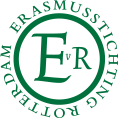Poem
Bakhyt Kenzjejev
Нет толку в философии. Насколько
Philosophy is useless. How much nicer it isto brew some tea, to make it strong, to sip it
with apricot preserves, while going through
your chest of treasures: a collection of
clay dragons from Samarkand, with their tails
chipped off and then repaired with good old glue.
If you get bored with that, there is also a collection
of toy lions. One of them, made of grey metal,
is most amusing, with its fierce head
and mangy mane; originally it embellished
the handle of an ancient sword, then someone
ingeniously used it as a model for the corkscrew
that I, unfortunately, cannot put to use because
the thing was given to me as a farewell memento.
I have no reason not to cherish all these objects:
for over a quarter of a century they’ve been forming
a tight circle around me, and were it not for them
so much would be forgotten. Here is a tarnished
tea-glass holder, a reminder of trains that used to be,
and of a teaspoon that would tinkle against thin glass
in a compartment, on a railroad stretch between
Saratov and Orenburg; here is a silver-plated
cigarette case with the Soviet Kremlin indented
on the lid, with a most touching elastic band inside,
as if from an undergarment. Inside, it houses
a handful of small change in various denominations –
five-, fifteen-, twenty-kopeck coins and, above all,
the two-kopeck coins that now no longer can
convey all of their former magic meaning:
a night in February, a frozen-through phone booth,
in the receiver a barely audible voice of her
who is at the other end of Moscow, and your heart
is pounding, not for the reason of too much caffeine
or alcohol, but because of too much happiness.
And here we have a tiny copper icon, so badly worn
that you can hardly see St. Nicholas on it. These days
you find them by the dozen in antiques shop, to the delight
of tourists, but in earlier days they were a rarity
used as a gift that stood for love. Another saint:
a hologram icon encased in colored glass,
identical to the copper prototype; I asked
Bishop Vitaly to inspect it, so as to be sure
it was not sacrilegious. The Right and Reverend
laughed and blessed the icon, saying it was all right.
Here is a wooden gent. Some thirteen years ago
my buddy Pete gave it to me. It is a folksy figurine,
about a foot in height: sad-looking Pushkin seated
on a bench, wearing a top hat, with a wooden cane in hand;
regrettably, the tips of his high boots are broken off,
and there are some cracks on him, but that’s alright.
Here is my father’s “Victory” watch, with a metal bracelet:
I never wear it, for the fear of losing. Here’s a bust of Lenin
in cast iron, weighs a ton; the angry eyes with a Mongol slant.
Once at a railroad station in Leningrad, at a souvenir stand
I overheard a man who, seeing all those countless busts,
was trying to convince his friend that pretty soon
they would become a rare item. As I recall, I merely
smirked in disbelief.
Quite recently I read in Toporov that the main purpose
of any object is to objectify, that is, to exist not only
for practical use, but also to relate to man the way the latter
relates to God. The author further states, as he develops an idea
found in Heidegger, that the way Our Lord, being the master
of being, calls his sheep by names, so does man – the philosopher,
the poor moribund master of the world – call things by their names.
My treasures, go ahead, objectify; for me it is too early
to leave you for the world where phantoms rule,
where shades of objects stand for objects. As for you,
when I am dead and gone, I guess you will turn into
some hollow shells. So let us be like Gogol’s Plyushkin,
that wretched product of a troubled mind: how he adored you,
objects, and how tenderly he carried in his patched-up soul
a list of things that others believed to be long dead and gone.
© Translation: 2011, Steven Seymour
Publisher: First published on PIW, , 2011
Publisher: First published on PIW, , 2011
Нет толку в философии. Насколько
Aan wijsbegeerte heb je niks. Het is
veel fijner om, met lekker sterke thee
en abrikozenjam, je schatten één
voor één ter hand te nemen: je
collectie draken, klei, uit Samarkand,
met afgebroken staart en poten, vast-
gezet met die waanzinnig goede
kantoorlijm. Heb je daar genoeg van –
dan is er je collectie speelgoedleeuwen.
Die ene grijze, van metaal,
is heel erg leuk – hij heeft
een woeste kop en wapperende manen –
en sierde eens het handvest van
een stokoud zwaard, door iemand grappig
gebruikt als voorbeeld voor
het handvat van een kurkentrekker,
die ik helaas nooit pak, omdat ik hem
eens bij een afscheid als cadeau kreeg.
Je moet wel houden van dingen die
inmiddels zo lang zo dicht om je heen staan,
wat zou ik zonder ze niet al vergeten zijn?
Hier, een donker uitgeslagen onderzetter
die denken doet aan oude treinen,
het lepeltje dat tinkelt in
het dunne glas, op een baanvak ergens
tussen Saratov en ver Orenburg.
Kijk aan, een zilveren sigarettendoos,
het Kremlin in het deksel gegraveerd,
een stukje onderbroekenelastiek
erin, ontroerend, en een handje pasmunt –
wat halve roebels, dubbeltjes en stuivers,
en tweekopekenstukken, die allang
hun magische betekenis verloren hebben:
een winternacht, een buitentelefoon, een stem
schier onverstaanbaar in de koude hoorn,
van het andere eind van Moskou, bonkend hart,
niet van de drank of van de koffie,
maar van een overmaat aan puur geluk.
En hier, een koperen icoontje, zo
versleten dat Sint-Nicolaas haast weg is.
Ga een antiekzaak in, ze liggen er
bij tientallen, voor de toeristen, maar
dit was een liefdesgift in duistere jaren,
een ding uit duizenden. Hier nog een heilige,
met kleurig glas ervoor, een hologram,
net eender als het koperen prototype,
ik gaf hem ooit aan monseigneur Vitali,
om na te gaan of het geen blasfemie was.
De oude man moest lachen, zegende
het kleine ding en zei dat het in orde was.
Een gentleman van hout. Cadeautje van
vriend Petja, alweer dertien jaar geleden.
Een stukje volkskunst, houtsnijwerk,
een poppetje van dertig centimeter.
Een droef gestemde Poesjkin op een bankje,
met hoge hoed en met een houten stok,
helaas, de neuzen van zijn schoenen stuk,
zijn lijf gebarsten, maar dat is niet zo erg.
Mijn vaders Overwinningsklokje aan een
kettinkje van aluminium –
ik durf het niet te dragen, straks verlies
ik het. Een Leninbuste: loodzwaar gietwerk,
met boze ogen van Mongoolse snit.
Het was op een station in Leningrad,
een jaar of zes terug; ik hoorde toen
een man toevallig zeggen, aan een kraam
met massa’s van die busten: even nog,
dan zijn ze nergens meer te krijgen. Ik
geloofde het niet en lachte smalend, weet ik.
Een poosje terug las ik eens bij Toporov
dat dingen eigenlijk bedoeld zijn om
iets te vertellen, niet alleen als nuttig
gebruiksvoorwerp hun tijd te slijten, maar
zich net zo te verhouden tot de mens
als deze mens tot God. Als commentaar bij
Heidegger schrijft hij vervolgens dan
dat zoals God, de heerser van het al,
van tijd tot tijd zijn kudde schapen roept,
de mens ook – filosoof, of arme stumper,
of wereldheerser – om zijn dingen roept.
Vertel dus maar, mijn lieve schatten,
zolang ik nog niet weg hoef naar
de wereld van het wezenlijke, waar
de schaduwen de dingen zelf verdringen.
En verder, zonder mij zijn jullie hoogst-
waarschijnlijk lege hulzen. Laten we
als Pljoesjkin zijn, de sneue schepping van
een ziek genie: hij hield van jullie, echt,
hij droeg voor anderen vergane dingen
voorzichtig in zijn opgelapte binnenste.
© Vertaling: 2011, Arie van der Ent
Publisher: 2011, First published on PIW,
Publisher: 2011, First published on PIW,
Нет толку в философии. Насколько

© 2001, Bakhyt Kenzjejev
From: Sochinitel zvezd
Publisher: Poesjkinski fond, St Petersburg
From: Sochinitel zvezd
Publisher: Poesjkinski fond, St Petersburg
Poems
Poems of Bakhyt Kenzjejev
Close
Нет толку в философии. Насколько
Philosophy is useless. How much nicer it isto brew some tea, to make it strong, to sip it
with apricot preserves, while going through
your chest of treasures: a collection of
clay dragons from Samarkand, with their tails
chipped off and then repaired with good old glue.
If you get bored with that, there is also a collection
of toy lions. One of them, made of grey metal,
is most amusing, with its fierce head
and mangy mane; originally it embellished
the handle of an ancient sword, then someone
ingeniously used it as a model for the corkscrew
that I, unfortunately, cannot put to use because
the thing was given to me as a farewell memento.
I have no reason not to cherish all these objects:
for over a quarter of a century they’ve been forming
a tight circle around me, and were it not for them
so much would be forgotten. Here is a tarnished
tea-glass holder, a reminder of trains that used to be,
and of a teaspoon that would tinkle against thin glass
in a compartment, on a railroad stretch between
Saratov and Orenburg; here is a silver-plated
cigarette case with the Soviet Kremlin indented
on the lid, with a most touching elastic band inside,
as if from an undergarment. Inside, it houses
a handful of small change in various denominations –
five-, fifteen-, twenty-kopeck coins and, above all,
the two-kopeck coins that now no longer can
convey all of their former magic meaning:
a night in February, a frozen-through phone booth,
in the receiver a barely audible voice of her
who is at the other end of Moscow, and your heart
is pounding, not for the reason of too much caffeine
or alcohol, but because of too much happiness.
And here we have a tiny copper icon, so badly worn
that you can hardly see St. Nicholas on it. These days
you find them by the dozen in antiques shop, to the delight
of tourists, but in earlier days they were a rarity
used as a gift that stood for love. Another saint:
a hologram icon encased in colored glass,
identical to the copper prototype; I asked
Bishop Vitaly to inspect it, so as to be sure
it was not sacrilegious. The Right and Reverend
laughed and blessed the icon, saying it was all right.
Here is a wooden gent. Some thirteen years ago
my buddy Pete gave it to me. It is a folksy figurine,
about a foot in height: sad-looking Pushkin seated
on a bench, wearing a top hat, with a wooden cane in hand;
regrettably, the tips of his high boots are broken off,
and there are some cracks on him, but that’s alright.
Here is my father’s “Victory” watch, with a metal bracelet:
I never wear it, for the fear of losing. Here’s a bust of Lenin
in cast iron, weighs a ton; the angry eyes with a Mongol slant.
Once at a railroad station in Leningrad, at a souvenir stand
I overheard a man who, seeing all those countless busts,
was trying to convince his friend that pretty soon
they would become a rare item. As I recall, I merely
smirked in disbelief.
Quite recently I read in Toporov that the main purpose
of any object is to objectify, that is, to exist not only
for practical use, but also to relate to man the way the latter
relates to God. The author further states, as he develops an idea
found in Heidegger, that the way Our Lord, being the master
of being, calls his sheep by names, so does man – the philosopher,
the poor moribund master of the world – call things by their names.
My treasures, go ahead, objectify; for me it is too early
to leave you for the world where phantoms rule,
where shades of objects stand for objects. As for you,
when I am dead and gone, I guess you will turn into
some hollow shells. So let us be like Gogol’s Plyushkin,
that wretched product of a troubled mind: how he adored you,
objects, and how tenderly he carried in his patched-up soul
a list of things that others believed to be long dead and gone.
© 2011, Steven Seymour
From: Sochinitel zvezd
Publisher: 2011, First published on PIW, St Petersburg
From: Sochinitel zvezd
Publisher: 2011, First published on PIW, St Petersburg
Нет толку в философии. Насколько
Philosophy is useless. How much nicer it isto brew some tea, to make it strong, to sip it
with apricot preserves, while going through
your chest of treasures: a collection of
clay dragons from Samarkand, with their tails
chipped off and then repaired with good old glue.
If you get bored with that, there is also a collection
of toy lions. One of them, made of grey metal,
is most amusing, with its fierce head
and mangy mane; originally it embellished
the handle of an ancient sword, then someone
ingeniously used it as a model for the corkscrew
that I, unfortunately, cannot put to use because
the thing was given to me as a farewell memento.
I have no reason not to cherish all these objects:
for over a quarter of a century they’ve been forming
a tight circle around me, and were it not for them
so much would be forgotten. Here is a tarnished
tea-glass holder, a reminder of trains that used to be,
and of a teaspoon that would tinkle against thin glass
in a compartment, on a railroad stretch between
Saratov and Orenburg; here is a silver-plated
cigarette case with the Soviet Kremlin indented
on the lid, with a most touching elastic band inside,
as if from an undergarment. Inside, it houses
a handful of small change in various denominations –
five-, fifteen-, twenty-kopeck coins and, above all,
the two-kopeck coins that now no longer can
convey all of their former magic meaning:
a night in February, a frozen-through phone booth,
in the receiver a barely audible voice of her
who is at the other end of Moscow, and your heart
is pounding, not for the reason of too much caffeine
or alcohol, but because of too much happiness.
And here we have a tiny copper icon, so badly worn
that you can hardly see St. Nicholas on it. These days
you find them by the dozen in antiques shop, to the delight
of tourists, but in earlier days they were a rarity
used as a gift that stood for love. Another saint:
a hologram icon encased in colored glass,
identical to the copper prototype; I asked
Bishop Vitaly to inspect it, so as to be sure
it was not sacrilegious. The Right and Reverend
laughed and blessed the icon, saying it was all right.
Here is a wooden gent. Some thirteen years ago
my buddy Pete gave it to me. It is a folksy figurine,
about a foot in height: sad-looking Pushkin seated
on a bench, wearing a top hat, with a wooden cane in hand;
regrettably, the tips of his high boots are broken off,
and there are some cracks on him, but that’s alright.
Here is my father’s “Victory” watch, with a metal bracelet:
I never wear it, for the fear of losing. Here’s a bust of Lenin
in cast iron, weighs a ton; the angry eyes with a Mongol slant.
Once at a railroad station in Leningrad, at a souvenir stand
I overheard a man who, seeing all those countless busts,
was trying to convince his friend that pretty soon
they would become a rare item. As I recall, I merely
smirked in disbelief.
Quite recently I read in Toporov that the main purpose
of any object is to objectify, that is, to exist not only
for practical use, but also to relate to man the way the latter
relates to God. The author further states, as he develops an idea
found in Heidegger, that the way Our Lord, being the master
of being, calls his sheep by names, so does man – the philosopher,
the poor moribund master of the world – call things by their names.
My treasures, go ahead, objectify; for me it is too early
to leave you for the world where phantoms rule,
where shades of objects stand for objects. As for you,
when I am dead and gone, I guess you will turn into
some hollow shells. So let us be like Gogol’s Plyushkin,
that wretched product of a troubled mind: how he adored you,
objects, and how tenderly he carried in his patched-up soul
a list of things that others believed to be long dead and gone.
© 2011, Steven Seymour
Publisher: 2011, First published on PIW,
Publisher: 2011, First published on PIW,
Sponsors

























